[With GPS analysis & maps] A tough long distance with many long routechoice legs met the athletes in the last of the Norwegian WOC selection races. 1 hour and 40 minutes for the men – 1 hour and 24 minutes for the women.
The long distance race in Høydalsmo was also the first race in the JWOC tour. JWOC starts with sprint in Åmot – 16 kilometers from Høydalsmo – tomorrow.
Dæhlie with high speed – but not perfect orienteering
Magne Dæhlie has been running many good races in Norway lately – but in the long distance in Høydalsmo the veteran Hans Gunnar Omdal was nearly 2 minutes faster – winning the 13 kilometer race in 1 hour and 40 minutes.
Carl Godager Kaas (finished 4th) took the lead at the first control and stayed in front until control 7. Here Godager Kaas ran a very bad route – even running out of the map (see GPS illustration further down). Here Magne Dæhli (finished 2nd) took over the lead – but Dæhlie had to give the lead over to Omdal after losing 21 seconds and the lead to the 9th control. From here Hans Gunnar Omdal kept the lead until the finish (see splitsbrowser below).
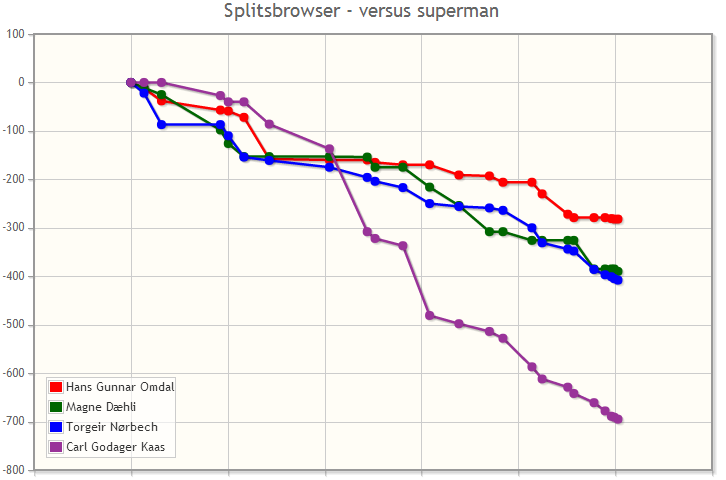
Omdal decided the race by constant orienteering all through the course – while Dæhlie had better speed, but did more mistakes. From the performance index curves below, one can see that Dæhlie had the best potential in the race, but he ran a very variable race. Torgeir Nørbech (finished third) had a very constant race, getting him a third place.
Olav Lundanes is pre-selected for the long distance – and did not run the selection race.
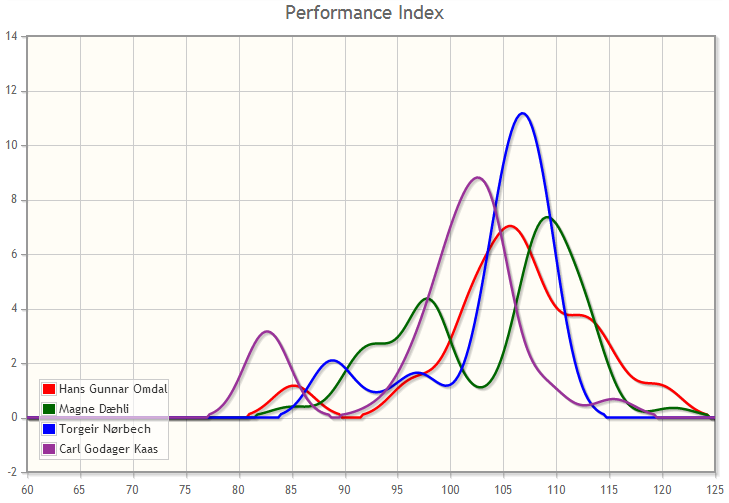
Women: Hauswirth and Fasting
In the women’s class there was very variable running. Mari Fasting has had injury problems since the training camp in Scotland earlier this spring, and is not yet allowed to run a complete long distance. Today her task was to run 50 minutes with high speed – which took her to control 10 of 16 with a 4 minute lead. Second at control 10 – and first in the finish – was Swiss Sabine Hauswirth who won the race 1:44 ahead of Tone Wigemyr (who then won the Norwegian WOC selection race) with Silje Ekroll Jahren in third more than 3 minutes down.
Sarina Jenzer took the lead at the first control. The race lead then changed between Sabine Hauswirth (leading at the 2nd control, losing 14 seconds and the lead at the 3rd), Ida Marie Næss Bjørgul (leading at the 3rd control, losing 1:28 at the 4th control and falling down to 4th place), Sabine Hauswirth (leading at the 4th control, losing 39 seconds and the lead at the 5th) and Heidi Østlid Bagstevold (leading from the 5th to 7th control, losing 51 seconds and the lead at the 8th) until Sabine Hauswirth took over the lead at control 8 of 16 controls and kept it until the finish.
Both Heidi Østlid Bagstevold and Ida Marie Næss Bjørgul had a good start – but Næss Bjørgul did a giant mistake at control 7 and lost all possibilities to fight for a top result. Østlid Bagstevold faded and did not manage to keep the good speed from the start of the race.
Tone Wigemyr had high speed, but unstable orienteering – especially in the start of the race she lost a lot of time. Her performance index curve is “all over the place”.
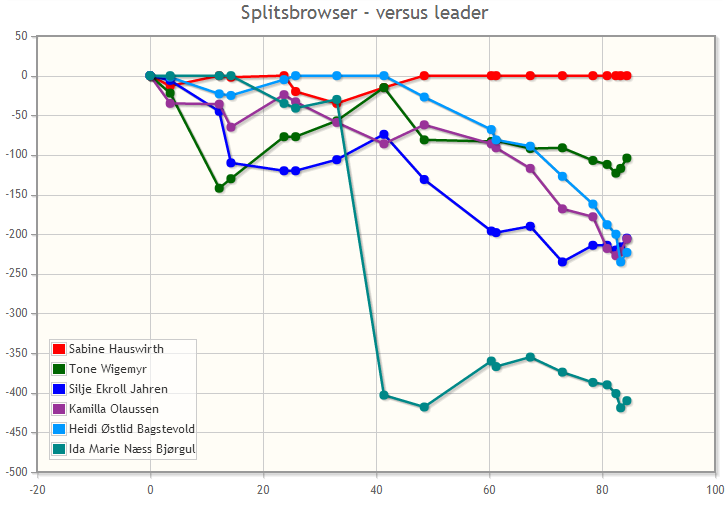
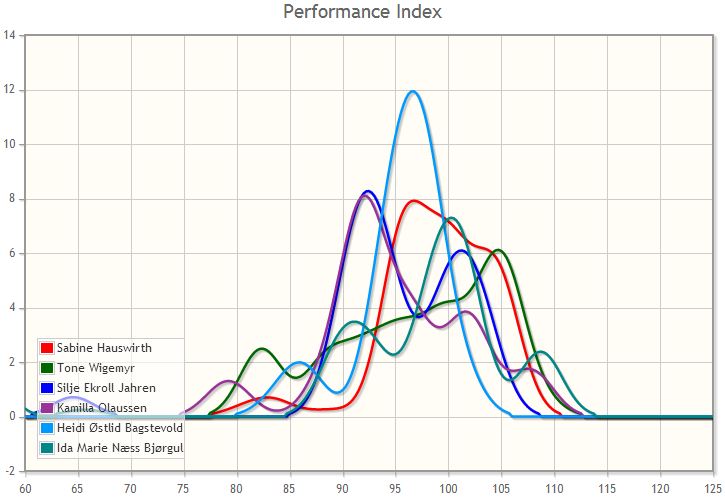
GPS illustrations
For maps see further down – first some GPS illustrations from some of the longer legs. Note that split times are based on GPS and may be up to 10 seconds wrong compared to official split times (Sorry, bad internet connection at the arena – no chance to do this properly).
Men 1-2
No big time differences here – left is fastest though. Note how Dæhlie loses time by going a direct route.
Men Leg 7-8 and Women Leg 2-3
This is where Carl Godager Kaas loses the lead – and the initiative. Trying to save climb, going too far to the right – in the end he comes down to the road and has to climb up again. The slope has too many cliffs and up-and-downs – generally keeping a bit up in the slope is the fastest here.
Note that the women had a very similar leg – and most women kept a lot higher in the slope than the men – many even going far too high (many of the ones going high are not shown in the illustration below). Fasting is the woman who runs lowest in the slope (similar to Omdal’s route) – and also the fastest on the leg. Generally Fasting often chooses similar routes as the men – more direct – this is also her strength. Interesting to see the different approach by men and women here.
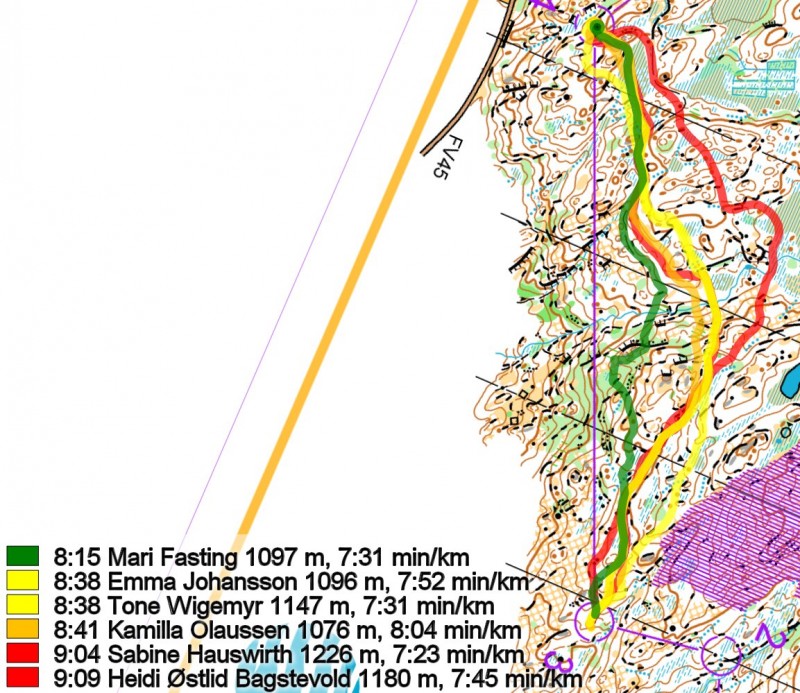
Men Leg 10-11 and Women Leg 7-8
An interesting leg in the slope where you can either go direct, down or up. For the men there are small time differences – notably only that Magne Dæhlie goes too high out of the control and loses some time. Running direct is slightly faster.
For the women there was a lot more spreading – both in time and in route. Fasting is fastest with a direct route. Note that from GPS-times she is even faster than the men – and wins the leg with one minute. Many women choose to run down, and lose some time on this. Some even chose to go very far up – far higher than Dæhlie, and lose even more time.
Women Leg 6-7
Many different choices – few of them good – and quite big time differences. Note how Tone Wigemyr finds a good balance between direct route and avoiding to climb the hill a the middle of the leg.
Women Leg 8-9
Again a leg in the women’s class with big time differences. Going right is short and fast – Fasting wins the leg with 40 seconds. Most women lose 2 minutes or more on this leg.
Maps and courses
Norwegian WOC Selection Long 2015: H21E

» See map in omaps.worldofo.com
Lang D21

» See map in omaps.worldofo.com
Results
Men
| 1. | Hans Gunnar Omdal | Kristiansand OK | 100:35 | (+0:00) |
| 2. | Magne Dæhli | Halden SK | 102:23 | (+1:48) |
| 3. | Torgeir Nørbech | IL Tyrving | 102:41 | (+2:06) |
| 4. | Carl Godager Kaas | Bækkelagets SK | 107:28 | (+6:53) |
| 5. | Bjørn Ekeberg | IL Tyrving | 108:58 | (+8:23) |
| 6. | Yngve Skogstad | Frol IL | 109:22 | (+8:47) |
| 7. | Øystein Kvaal Østerbø | IFK Lidingö SOK | 110:44 | (+10:09) |
| 8. | Anders Tiltnes | IL Tyrving | 112:54 | (+12:19) |
| 9. | Ivar Lundanes | Emblem IL | 113:14 | (+12:39) |
| 10. | Borger Melsom | Fossum IF | 117:22 | (+16:47) |
| 11. | Espen Weltzien | Järla Orientering | 118:13 | (+17:38) |
| 12. | Jo Forseth Indgaard | Frol IL | 118:16 | (+17:41) |
| 13. | Eirik Martens Svensen | Kristiansand OK | 118:54 | (+18:19) |
| 14. | Hans Petter Mathisen | NTNUI | 119:58 | (+19:23) |
| 15. | Carl Petter Lyngen | Frol IL | 120:17 | (+19:42) |
Women
| 1. | Sabine Hauswirth | Halden SK | 84:24 | (+0:00) |
| 2. | Tone Wigemyr | Bækkelagets SK | 86:08 | (+1:44) |
| 3. | Silje Ekroll Jahren | Raumar Orientering | 87:49 | (+3:25) |
| 4. | Kamilla Olaussen | Fredrikstad SK | 87:50 | (+3:26) |
| 5. | Heidi Østlid Bagstevold | Fredrikstad SK | 88:07 | (+3:43) |
| 6. | Ida Marie Næss Bjørgul | Halden SK | 91:14 | (+6:50) |
| 7. | Maren Jansson Haverstad | NTNUI | 92:13 | (+7:49) |
| 8. | Ingjerd Myhre | Järla Orientering | 92:46 | (+8:22) |
| 9. | Emma Johansson | Fredrikstad SK | 94:48 | (+10:24) |
| 10. | Linn Hokholt | NTNUI | 95:47 | (+11:23) |
| 11. | Marte Narum | Nydalens SK | 96:07 | (+11:43) |
| 12. | Bodil Helgerud | Halden SK | 97:42 | (+13:18) |
| 13. | Hanna Haugen Nordbrøden | Halden SK | 97:57 | (+13:33) |
| 14. | Sarina Jenzer | OLG Huttwil | 100:08 | (+15:44) |
| 15. | Anne Johanne Lind | Nydalens SK | 101:13 | (+16:49) |
 World of O News
World of O News

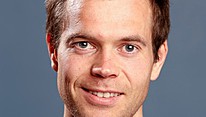
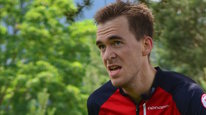
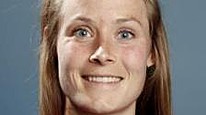
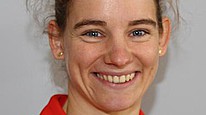
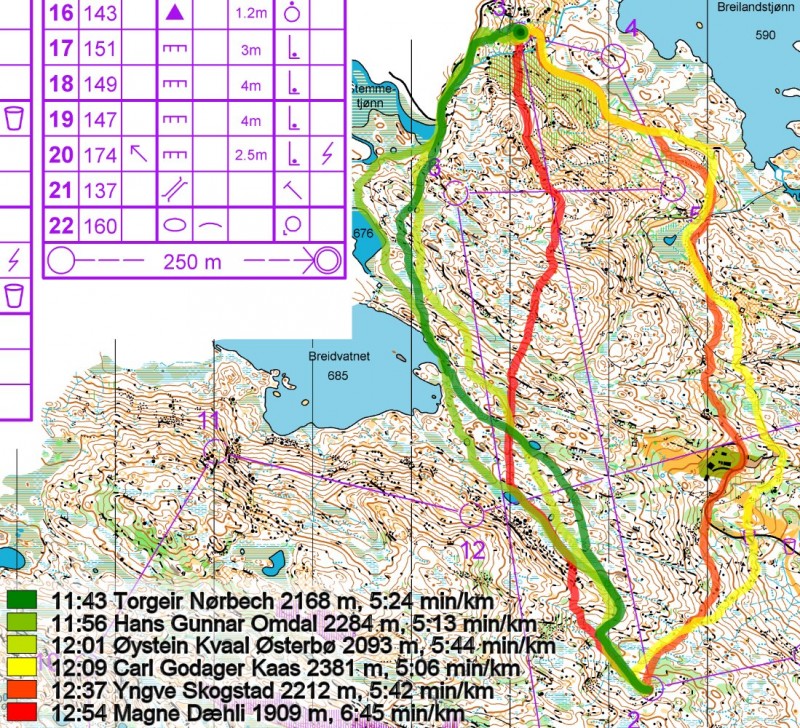
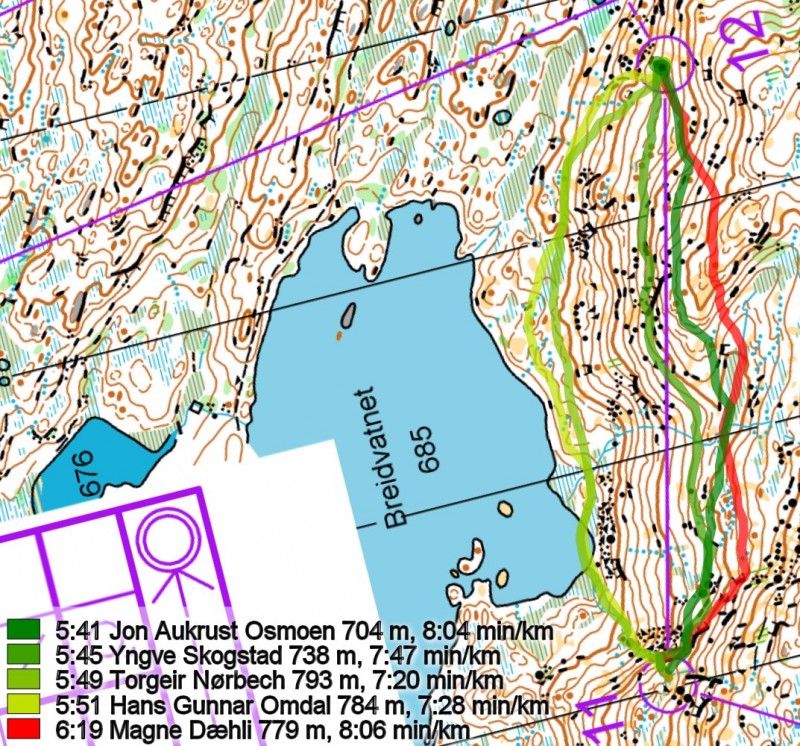
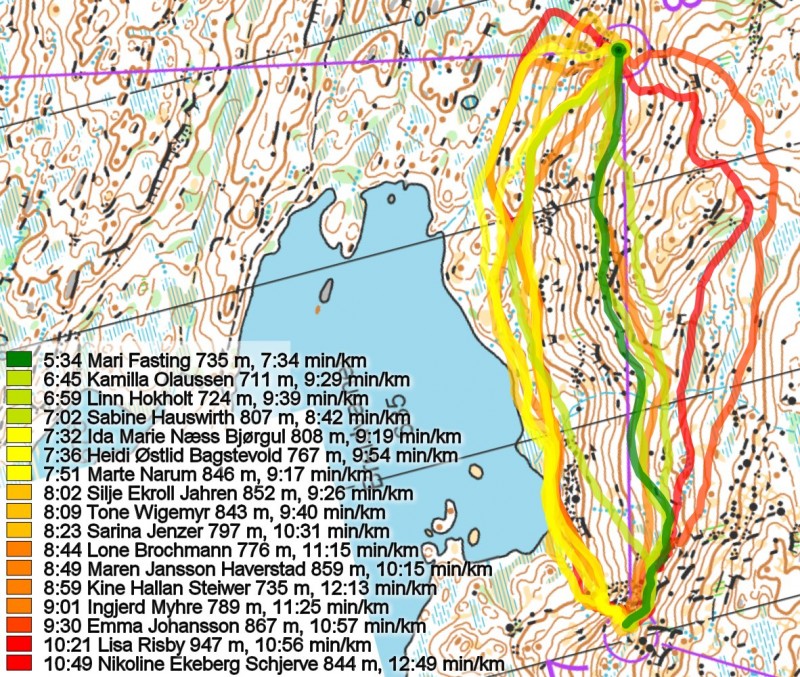
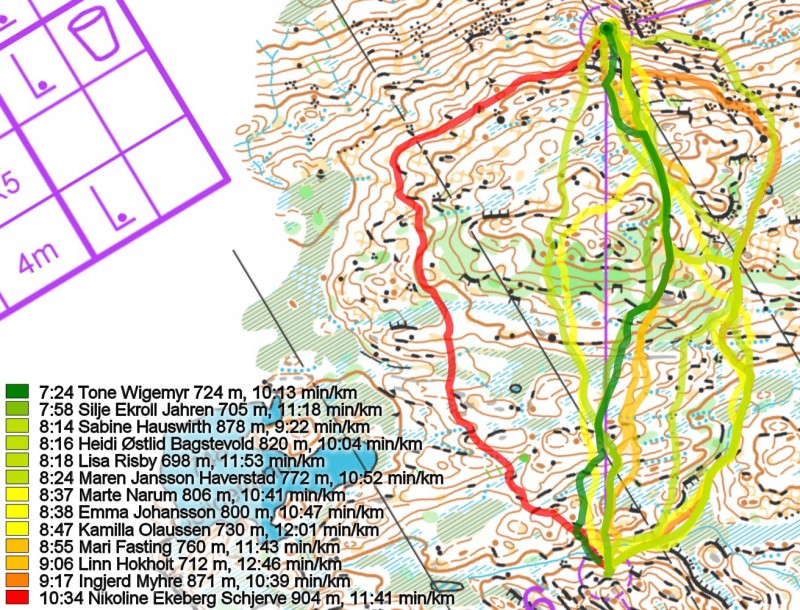
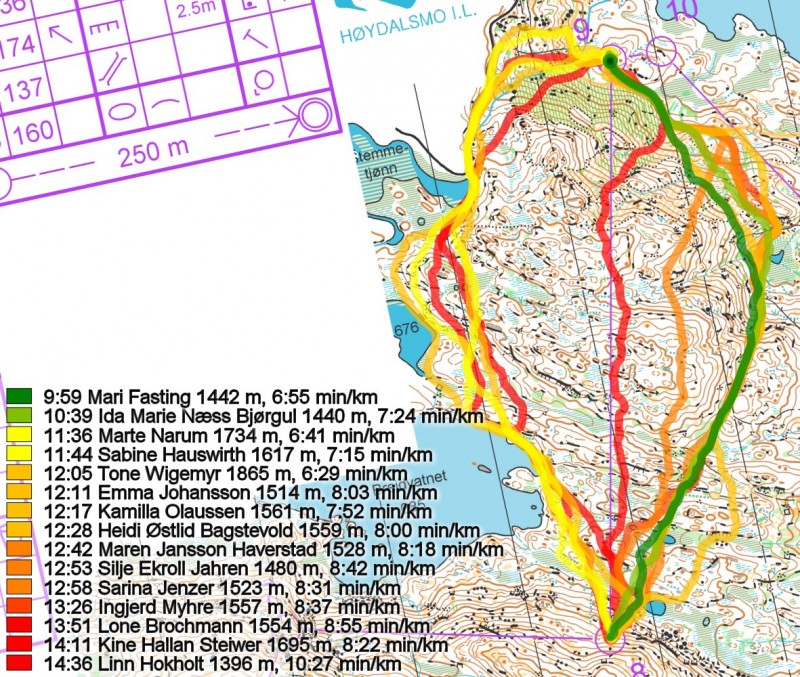
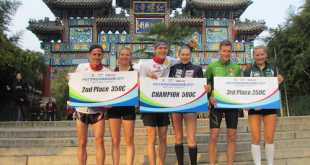
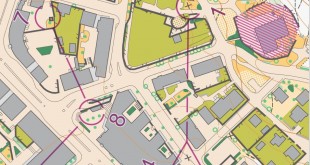
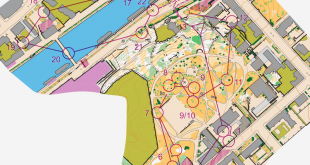
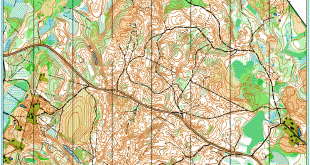
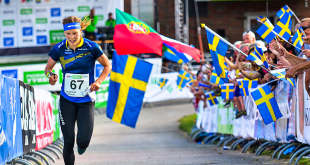
Excellent course! A lot of bad route choices and mistakes by most runners …
Again, as I said after the middle distance, I think this shows (once again) that the level of the Norwegian WOC candidates are not at the highest international level. And I don’t think Norway will get a single medal this year – sorry.
@Dilbert: As my brother said a day or two ago, I think you are wrong. :-)
Mari Fasting is obviously both fast and strong enough to fight for a long distance medal, I’m particularly impressed by how she did the very difficult side slope leg (7-8) faster than all the men.
With Olav back on the starting line as well I think this WOC can be quite good.
If you look carefully 7-8 men is a little bit shorter than 2-3 women. The starting control is not exactly the same, so it saves around 30sec for the women on this leg.
Good point! Added comment about it now. I didn’t really compare the split times here, I was more concerned with the route choice options. I guess although this does not have a very big impact on route choice, it could influence the choice of route (i.e. men being more probable to go left).